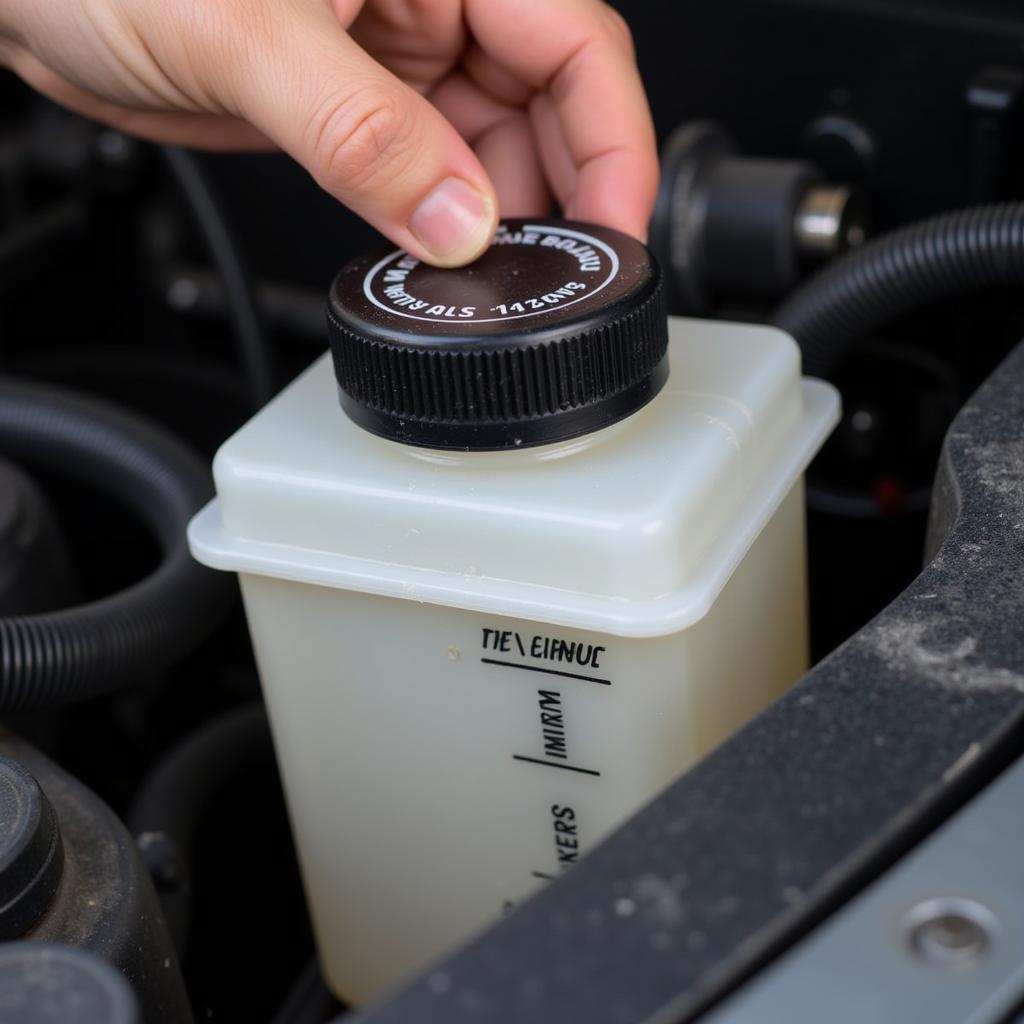Fixing your car brakes can seem daunting, but with the right knowledge and tools, it can be a manageable DIY project. Understanding how your braking system works is the first step to diagnosing and fixing any issues. This comprehensive guide will walk you through the process of How To Fix Your Brakes On A Car, covering everything from identifying the problem to replacing the necessary components.
It’s crucial to have a functional braking system for your safety and the safety of others on the road. Don’t compromise on your safety! This article will empower you with the knowledge to confidently tackle your brake repairs. Whether you’re experiencing squeaky brakes, a soft brake pedal, or reduced braking power, we’ll cover the common problems and their solutions. Need a professional opinion? Check out options for a car brake fix near me.
Identifying the Problem: Why Aren’t My Brakes Working?
Before you start taking things apart, it’s essential to pinpoint the exact issue with your brakes. Different symptoms point to different problems. Is your brake pedal feeling spongy? You might have air in the brake lines. Are you hearing a grinding noise? Your brake pads might be worn down to the metal. Do your brakes feel weak? You could have a leak in your brake fluid. Properly diagnosing the problem is half the battle when learning how to fix your brakes on a car.
Common Brake Problems and Symptoms
- Spongy Brake Pedal: This usually indicates air in the brake lines.
- Grinding Noise: This is a tell-tale sign of worn brake pads.
- Squealing Brakes: This can be caused by worn pads, glazed rotors, or even just dust and debris. You can find more information on fixing squeaky brakes on car.
- Pulling to One Side: This could be a sign of a stuck caliper or uneven brake pad wear.
- Soft or Low Brake Pedal: This might indicate a leak in the brake system.
- Vibrating Brake Pedal: This often points to warped rotors.
How to Fix Your Brakes on a Car: A Step-by-Step Guide
Once you’ve identified the problem, you can start the repair process. This guide will focus on the most common repair: replacing brake pads and rotors. Remember, safety is paramount. If you are not comfortable working on your brakes, take your vehicle to a qualified mechanic. For those in the Bridge Water area, consider fix car brakes in bridge water.
- Gather Your Tools and Materials: You’ll need new brake pads and rotors, a jack, jack stands, lug wrench, brake caliper tool, C-clamp, and some basic hand tools.
- Secure the Vehicle: Park on a level surface, engage the parking brake, and chock the rear wheels.
- Remove the Wheel: Loosen the lug nuts, jack up the car, and remove the wheel.
- Remove the Caliper: Use the caliper tool to compress the caliper piston and remove the caliper bolts.
- Replace the Brake Pads: Install the new brake pads, ensuring they are seated correctly.
- Replace the Rotor: Remove the old rotor and install the new one.
- Reinstall the Caliper: Bolt the caliper back onto the rotor.
- Reinstall the Wheel: Put the wheel back on, tighten the lug nuts, and lower the car.
- Repeat for the Other Wheels: Follow the same steps for the remaining wheels.
- Bleed the Brakes: This is crucial to remove any air that may have entered the brake lines.
“Remember to always double-check your work and ensure all bolts are tightened to the correct torque specifications,” advises John Smith, a seasoned automotive technician with over 20 years of experience. “Properly functioning brakes are essential for safe driving.”
Maintaining Your Brakes: Prevention is Key
Regular brake maintenance can prevent costly repairs down the road. Simple tasks like checking your brake fluid level and inspecting your brake pads regularly can help you catch problems early. Wondering about the costs involved? Explore more about how much does it cost to fix your car brakes.
 Checking Brake Fluid Level
Checking Brake Fluid Level
“Don’t underestimate the importance of regular brake inspections,” adds Sarah Jones, a certified brake specialist. “A small investment in preventative maintenance can save you from major headaches and expenses later on.” For further information on dealing with squeaky brakes, refer to fixing squeaky brakes on your car.
Conclusion
Learning how to fix your brakes on a car can be a valuable skill, saving you money and giving you peace of mind. However, brakes are a critical safety system, and if you’re unsure about any step of the process, it’s always best to consult a professional. Contact AutoTipPro at +1 (641) 206-8880 or visit our office at 500 N St Mary’s St, San Antonio, TX 78205, United States for assistance with your car brake needs.




Leave a Reply